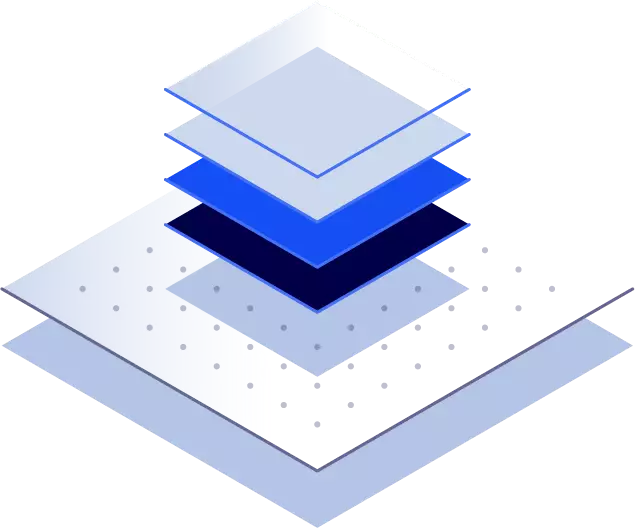Liquidity Flywheel Drives Binance to 300 Million Users

Stablecoins: Does Trust Really Matter?

Welcome to Deep Dive!
After the events of 2023, Tether has become the dominant stablecoin, despite being the least trusted. In this week’s Deep Dive, we explore whether this is evidence that trust is a lower priority for crypto investors, who seem to prefer peg stability, liquidity and versatility more.
-
USDT has risen to become the dominant stablecoin, despite being the least trusted.
-
USDC and DAI suffering from depegging during the banking crisis, while BUSD given an expiry date.
-
CEX and DEX volume share shows different stablecoin preferences.
-
Investors seem to prioritize USDT’s peg stability, liquidity and versatility over its opaque reporting.
The stablecoin market has been upended in 2023. The start of the year saw BUSD given an expiry date of 2024, a banking crisis in March hit USDC and DAI hard, while Binance anointed TUSD as its stablecoin of choice by choosing it for one of the few zero-fee BTC pairs in crypto. All of these events had huge ramifications for stablecoin market structure. BUSD was killed off, USDC and DAI depegged after the banking crisis, and TUSD rose to relevance. Amidst all of this, USDT became the industry’s most trusted stablecoin. This article will explore the evolution of stablecoin market structure over the years, and dig deeper into how one of the industry’s most opaque companies has been crowned the king of stablecoins.
Never miss an analysis.
Subscribe to our free weekly Data Debrief email, or learn more about our premium research subscriptions here.
The Fall of Fiat
Stablecoins have never been more important for the crypto industry than in 2023. Stablecoin’s share of volumes rose from 60% in 2022 to 76% now, as fiat trading begins to die out.

Harsh regulation in the U.S as well as a shutdown of fiat payment rails have made it more efficient to trade with stablecoins on crypto exchanges. The dominant stablecoin, therefore, has even more influence over the health of the market now than ever before.
The Stablecoin Landscape
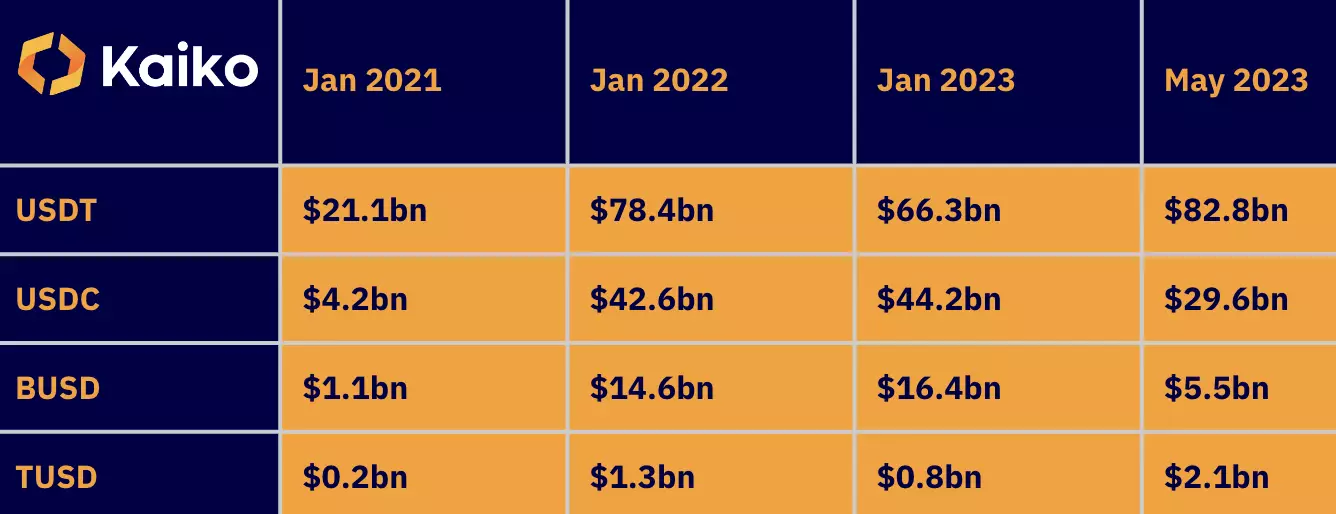
Snapshots of stablecoin market cap help us visualize the ebbs and flows of the competitive landscape of stablecoins.
- At the start of 2021, Tether was by far the biggest stablecoin, over 5x larger than USDC, with BUSD and TUSD lagging behind. The bull run of 2021 saw a massive increase in stablecoin market cap as USDT increased nearly 4x, USDC increased 10x, BUSD increased a massive 14x thanks to Binance’s strong year, while TUSD passed the $1bn mark.
- 2022 saw the stablecoin landscape shift again as the bear market grew teeth. Interestingly though, USDC and BUSD market cap actually increased year over year, while Tether lost over $12bn in market cap thanks to a depeg after the FTX collapse. USDC’s peg remained impressively stable during a tumultuous end of 2022 and saw its market share rise as a result, perceived at the time to be crypto’s safest and most transparent centralized stablecoin.
- However, that would all change in 2023 as the banking crisis saw USDC trade at a huge discount. This led to mass redemptions from Circle, resulting in a $14bn loss of market cap for USDC. BUSD was given an expiry date by Paxos and has lost over 66% of its market cap this year, while TUSD market cap has been boosted by favorable treatment from Binance.
volume share
Market cap paints one tale of stablecoin dominance, but volume share is also worth a look to see which stables are leading in trading volumes. The notable discrepancy between market cap and volumes here is TUSD, increasing its volume share massively from 0% two months ago to over 30% now.
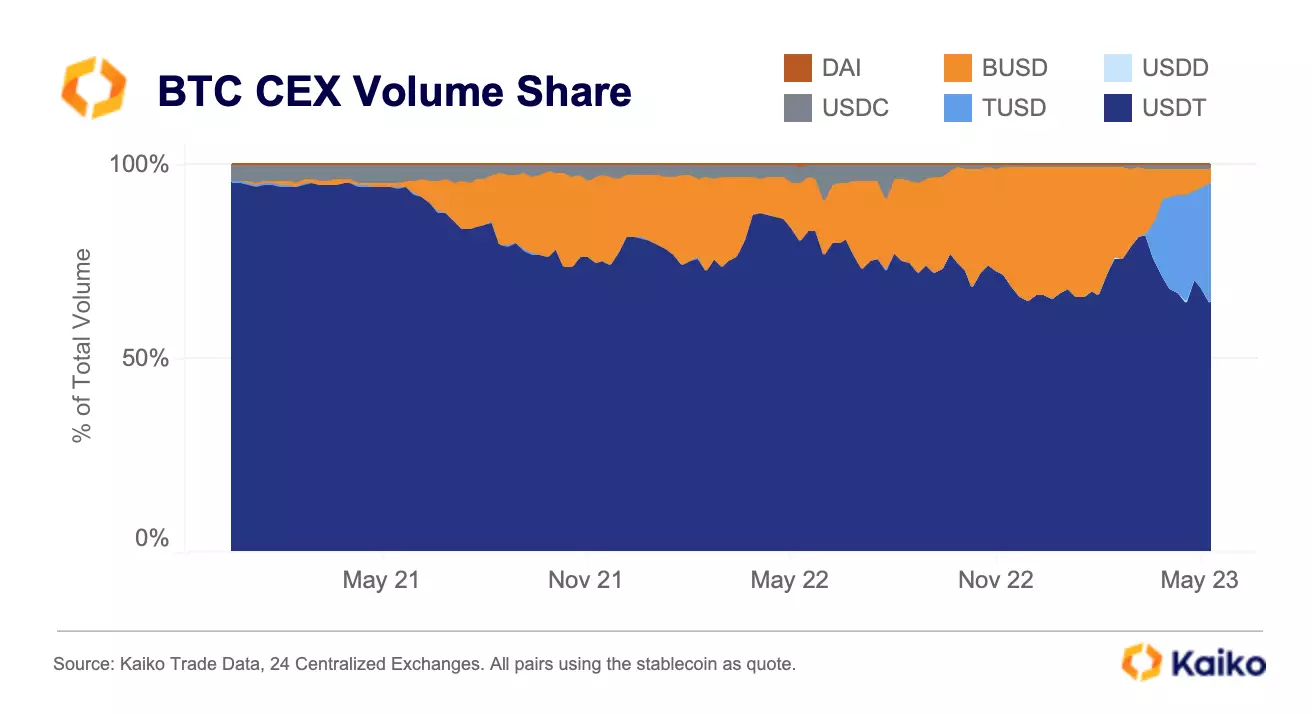
TUSD’s rise, and BUSD’s fall, demonstrates Binance’s power over the stablecoin market. It’s still unclear why Binance crowned TUSD as their favored stablecoin but either way TUSD has been thrusted into prominence. USDC volumes on CEXs have fallen to practically zero, while another centralized stablecoin USDD has virtually no trading volume on the exchanges covered.
DEX market share paints a slightly different picture, with even more interesting narratives at play:
- DAI’s fall from grace. DAI has suffered from a lack of direction. Billed as a decentralized stablecoin, but with an overreliance on USDC in its reserves, it sits somewhere in ambiguity. Its share of DEX volume has suffered as a result, falling from the market leader at 28% of volumes in 2021, to just 2% now. DAI is fading into irrelevance and the market looks ripe for another decentralized stablecoin option. DAI’s USDC and USDT pairs also had 11% of volume combined in 2021, before falling to just 5% today.
- USDC’s rise as a market leader and USDT’s fall in Defi trading. In what is an interesting contrast to centralized exchanges, DEX traders tend to prefer USDC as their trading stable of choice, electing for the more transparent stablecoin over USDT’s more stable peg of late.
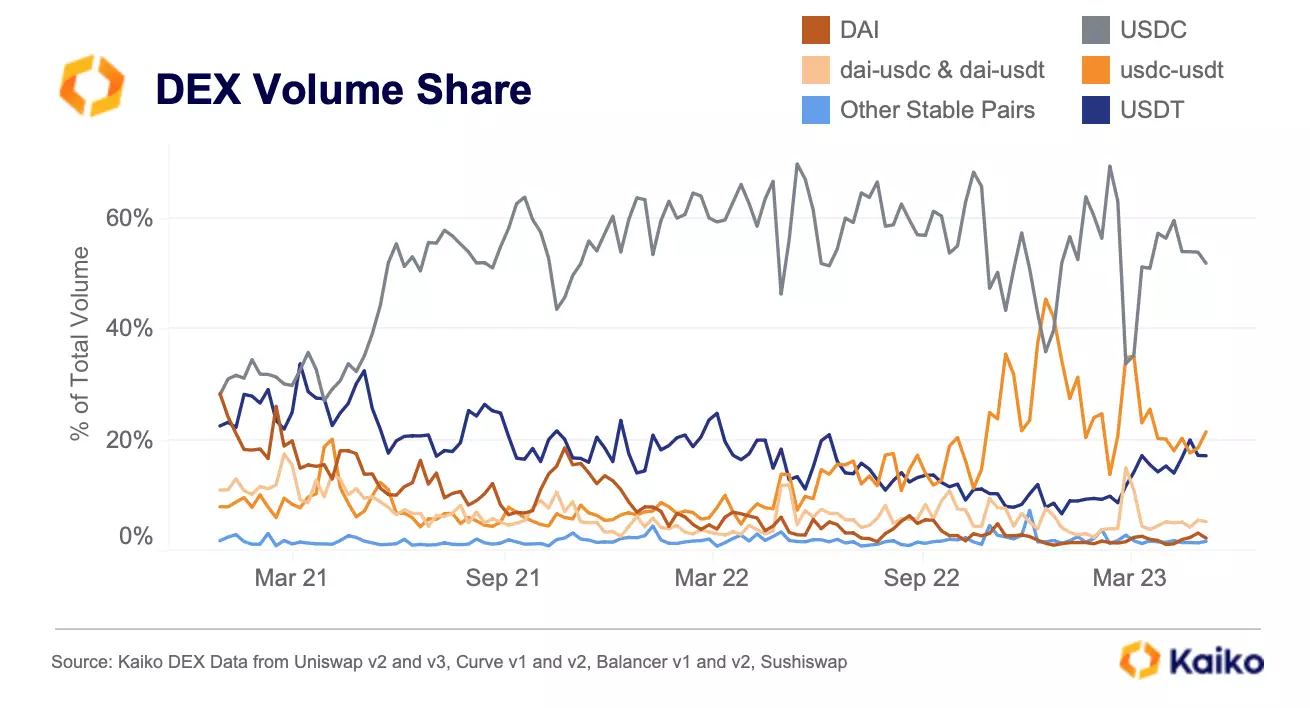
The difference between USDC and USDT’s usage on CEXs and DEXs suggests two different investor types. Traders on CEXs are likely less concerned with centralization risks and would rather USDT as the market leading stablecoin. This in spite of Tether’s opaque reporting of reserves backing USDT.
reserves
Tether still includes an Other category that makes up 3% of reserves, leaving us in the dark as to what assets are contained in this category. What we can say is that in Q1, Tether booked $1.48bn in profits, a staggeringly high figure. Most people attributed this return to high interest rates on their US government bonds. However, using Tether’s actual risk free holdings, the profits earned by Tether actually equates to 7.9% APR, +3.15% higher than the risk free rate, indicating that Tether is taking on an extra 3.15% in risk with their holdings.
They announced a $1.5bn holding of BTC they amassed in Q1, and promised to spend 15% of their net profits in the future on BTC. That gives BTC a 2% weight in their holdings as of now, with that number set to increase going forward.
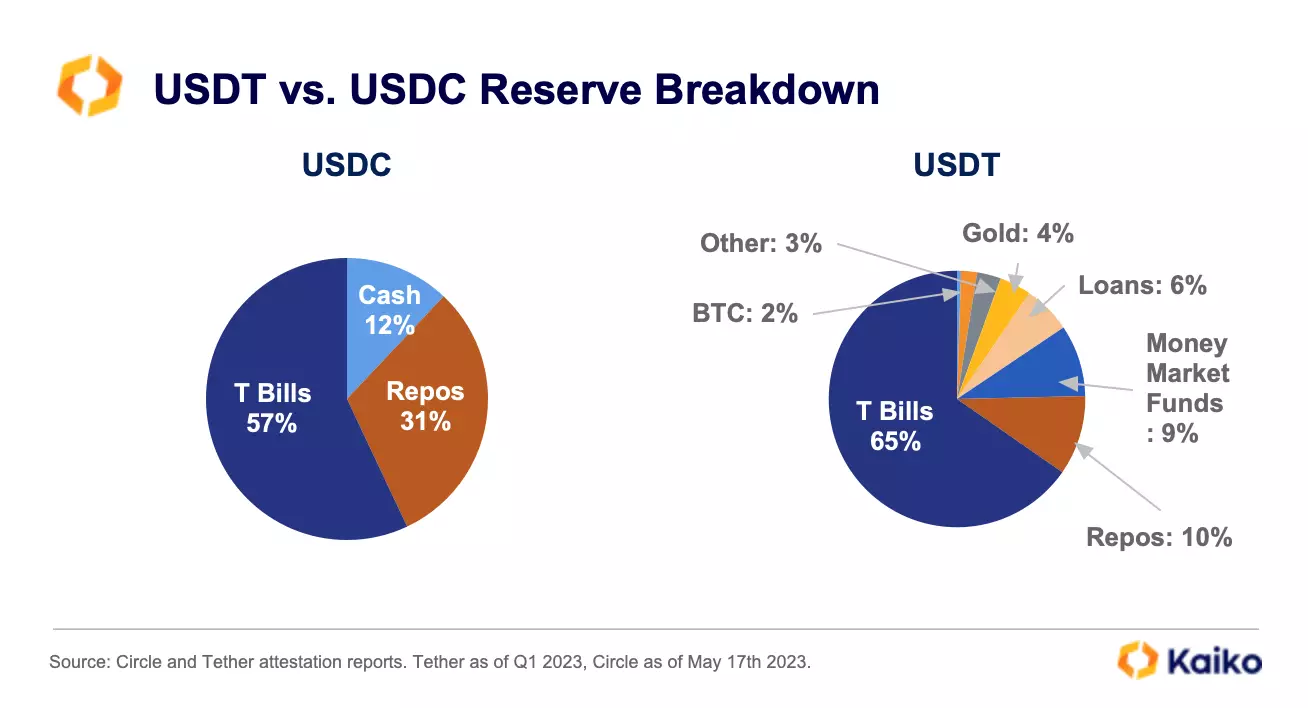
Tether has defended this move, saying it’s only using excess profits to buy BTC. However, Tether now has $12.5bn, or 15% of reserves, that are invested in risky assets (BTC, Gold, Other, and Secured Loans). This makes me wary of the decision to buy more BTC going forward. I’m not sure why Tether couldn’t just park their excess profits in a far more liquid money market fund earning near 5%. My only explanation is that they want to increase their asset base that is out of reach of the US government. We can see USDC’s allocation is far more liquid, government-backed and objectively less risky.
Looking from a collateral standpoint, USDC is suffering as of late because of a decision as to where to keep their cash. USDT is rising off the back of BTC purchases and its other risky investments. However, in fairness to USDT, there are a few more reasons why it’s leading the stablecoin race at the minute. Here are 3:
1) Peg stability
As other stablecoins struggled, USDT and its peg held strong. Tether’s rise suggests peg stability is far more important for most stablecoin holders than issuer transparency. USDT can proudly claim at least 6 months of peg stability, while most other stablecoins struggle to claim even 3 months.
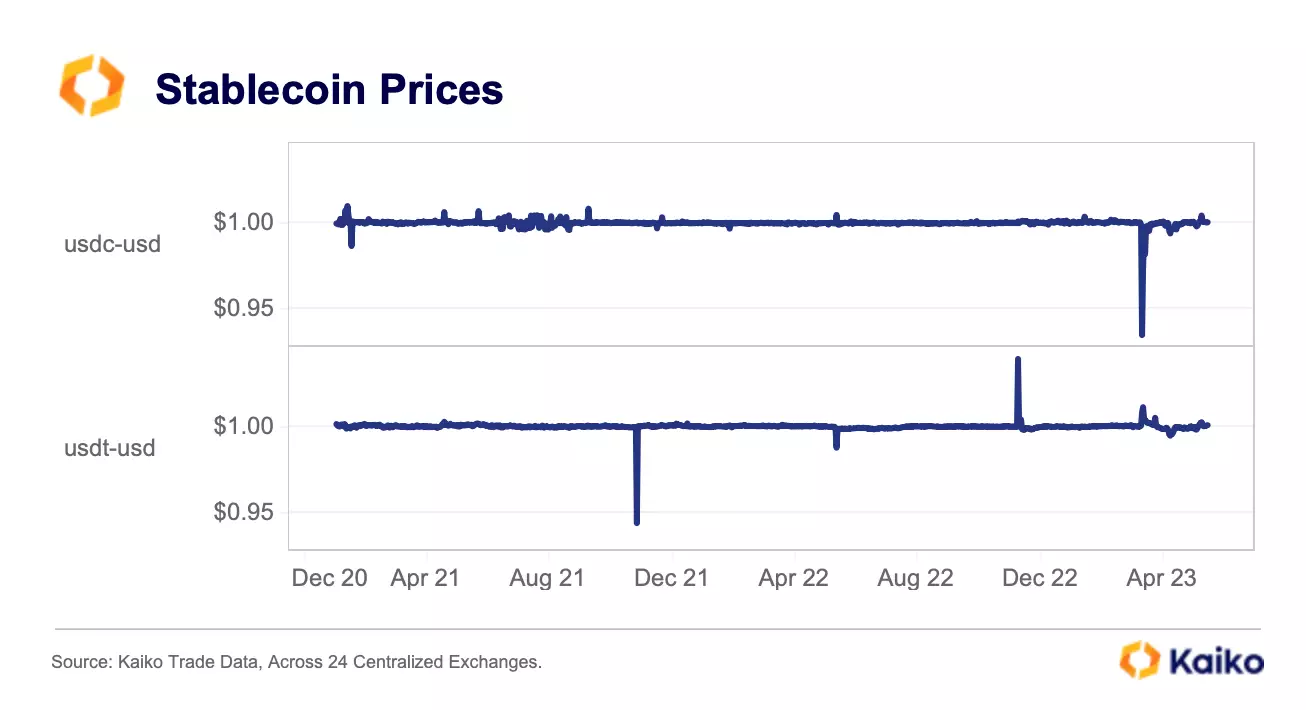
TUSD and BUSD’s pegs have been put under some pressure lately, while DAI, billed as a more decentralized stablecoin, has fallen victim to an overreliance on USDC, depegging alongside USDC in March.
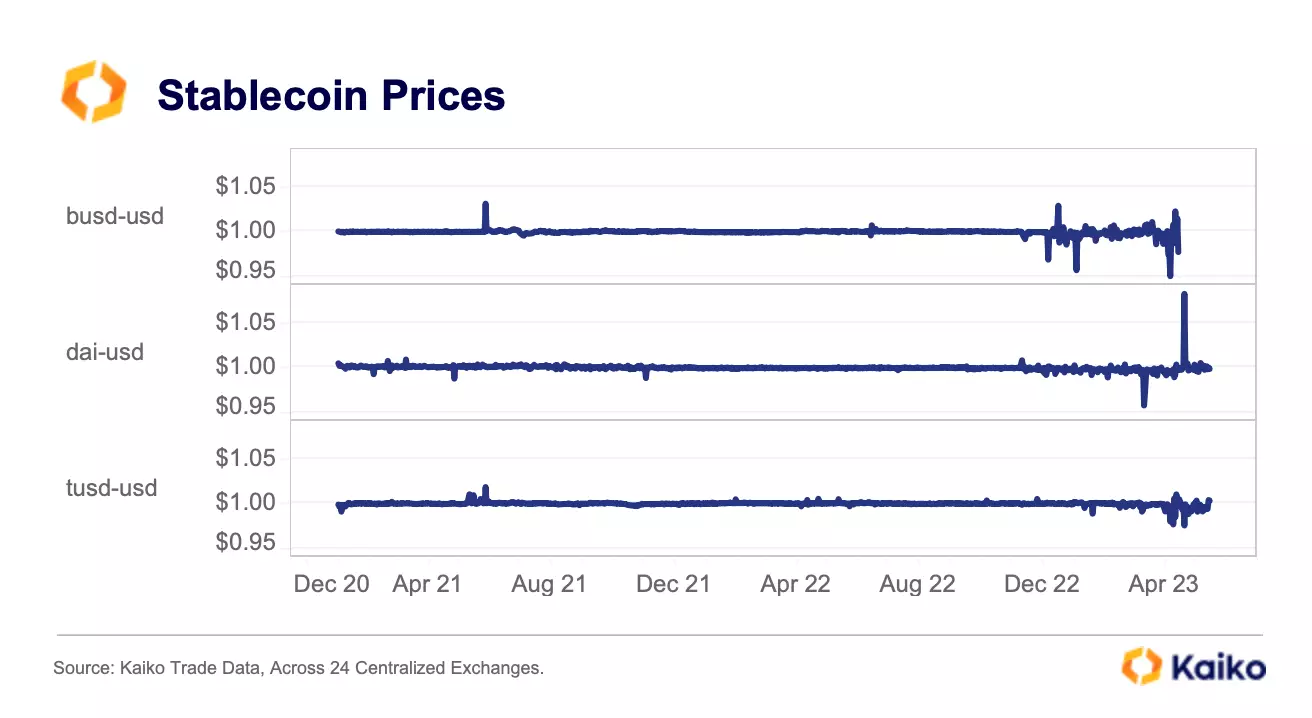
Zooming in on 2023, it’s clear to see why investors are favoring USDT, which in fact traded at a premium as USDC depegged in March.
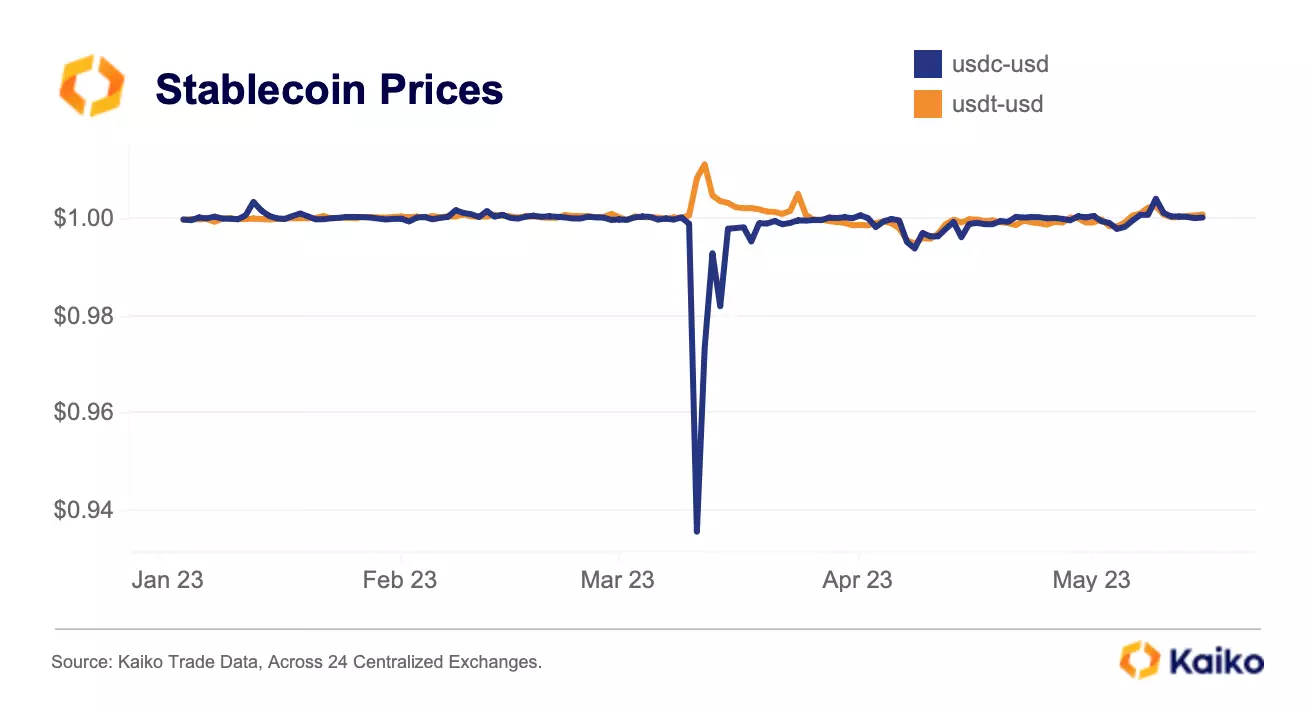
2) Liquidity
USDT is also by far and away the most liquid stablecoin on centralized exchanges, boasting a 1% market depth across the top tokens in crypto of over $130m, compared to USDC’s $18m. Greater liquidity allows a stablecoin to dominate trading volume and Tether has been a big beneficiary of outsized market depth on exchanges.
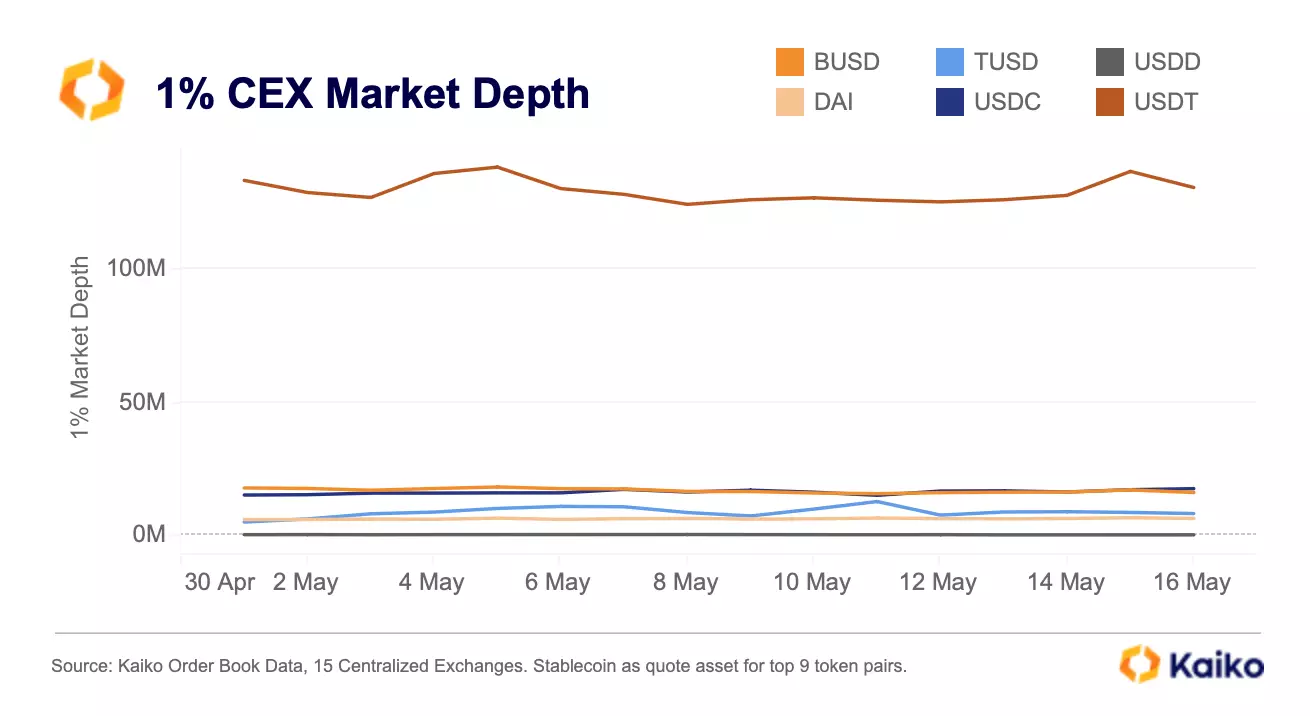
3) Versatility
As far as trading pairs go, USDT offers traders exponentially more options as a stablecoin to trade against, mainly thanks to its abundance of pairs on centralized exchanges. As of today, USDT is the quote asset for 3,347 pairs across centralized exchanges, while BUSD accounts for 324 pairs and USDC 274 pairs. The reality is, holding USDT gives you far more flexibility for trading on exchanges today.
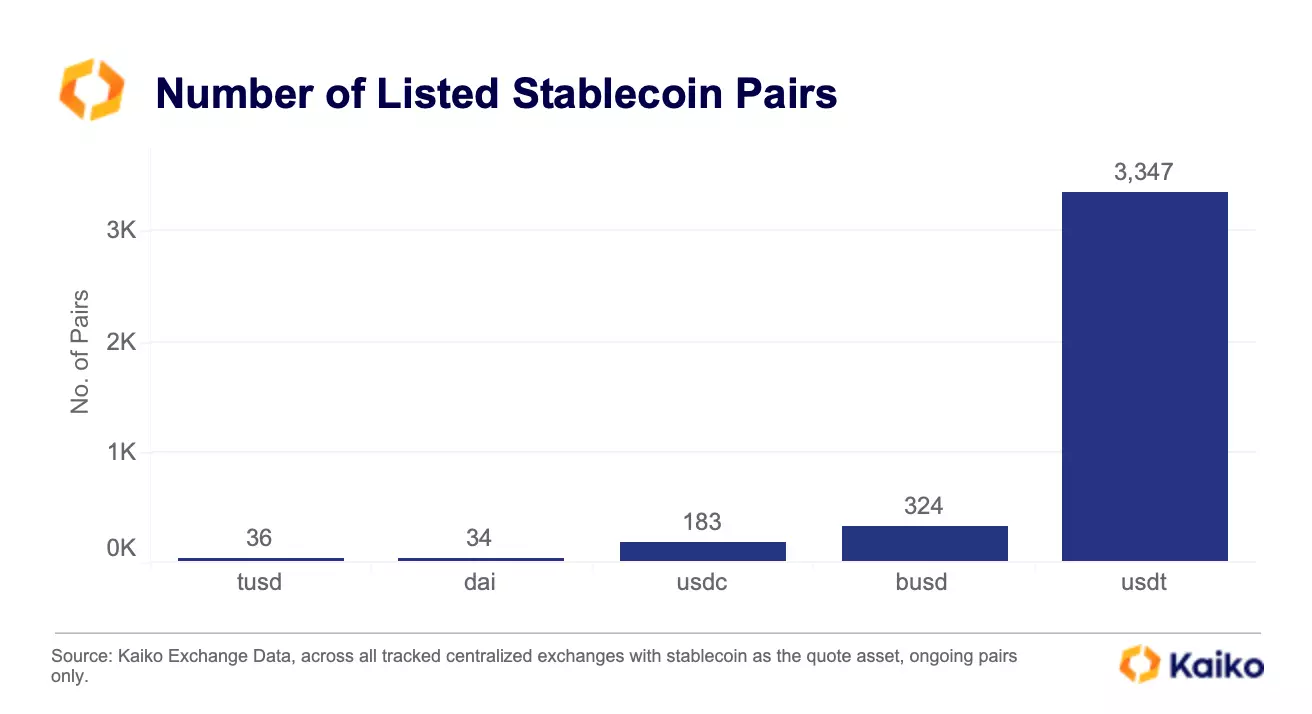
Conclusion
Tether defenders seem to be justifying the move to buy BTC as part of their reserves as it will be coming from excess profits. This ignores the big problems with the makeup of said reserves: ambiguous and risky. However, with a stable peg, greater liquidity and more flexibility for traders, USDT will continue to dominate the centralized stablecoin race. USDC’s best hope for competitiveness is greater peg stability, or a Tether collapse, but USDC’s growth itself is entirely dependent on the regulatory environment in the US over the short term. Regulatory uncertainty has seen Tether become a big winner in the crypto industry, and that’s something that should worry an industry priding itself on transparency and accountability. The least trusted stablecoin has become the most trusted, by default.
DeFi practically runs on these two stablecoins, and it needs a better, more decentralized solution than DAI in order to protect itself from any potential issues with USDT or USDC. The issue is, after Terra, decentralized stablecoins have been banished to the dark realm. Hopefully new stablecoins such as crvUSD, GHO, or others that have yet to be rolled out, can provide investors with a decentralized, healthier solution to the hazy world of centralized stablecoins.
Data Used In This Analysis

More From Kaiko Research
![]()
Derivatives
22/12/2025 Data Debrief
Crypto in 2026, What Breaks, What Scales, What ConsolidatesCrypto markets enter 2026 in a markedly different position than in prior cycle transitions. Rather than resetting after a speculative peak, the market appears to be progressing through a phase of institutional consolidation.
Written by Thomas Probst![]()
Year in Review
01/12/2025 Data Debrief
Kaiko Research's Top 10 Charts of 2025In this report, we look back on 2025 and the key forces that shaped markets. From BTC record highs and fleeting altcoin rallies to major liquidation events and evolving regulation, we examine what shaped a seminal year for crypto.Written by Adam Morgan McCarthy![]()
Stablecoin
24/11/2025 Data Debrief
MiCA's Impact on Crypto in EuropeEurope is progressing with a conservative structured crypto framework that leans towards regulating innovation.Written by Adam Morgan McCarthy![]()
Macro
17/11/2025 Data Debrief
Navigating Fed Fears & AI Bubble BurstingGiven the current macroeconomic context, we are seeing the emergence of two major risks likely to have a decisive impact.
Written by Adam Morgan McCarthy


